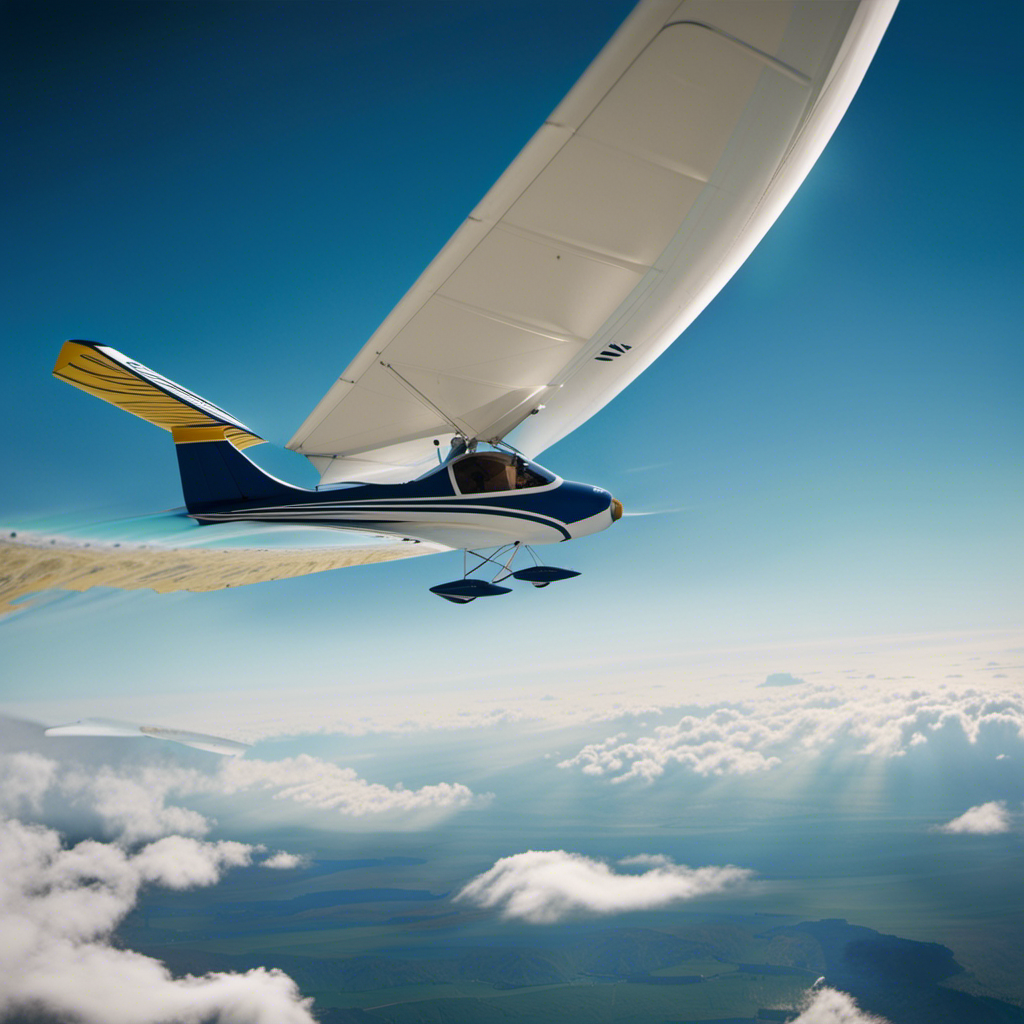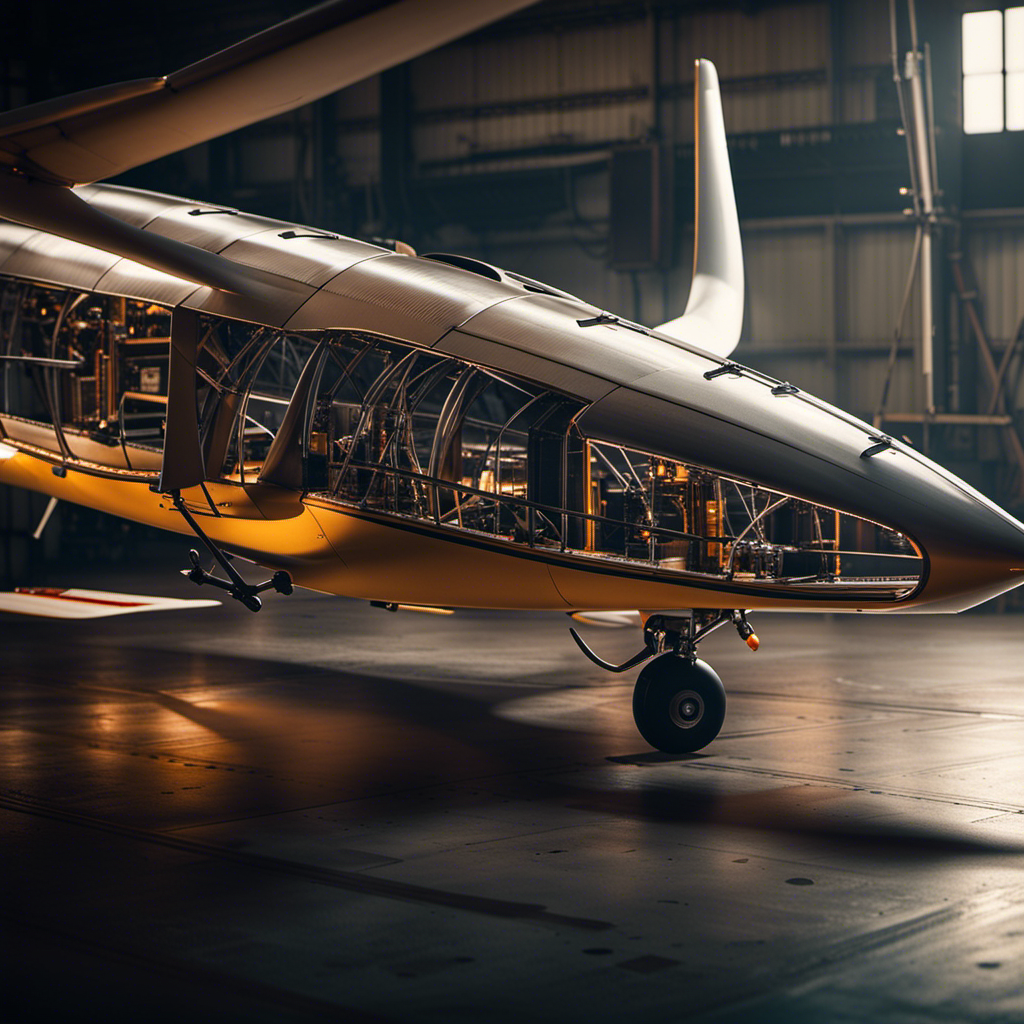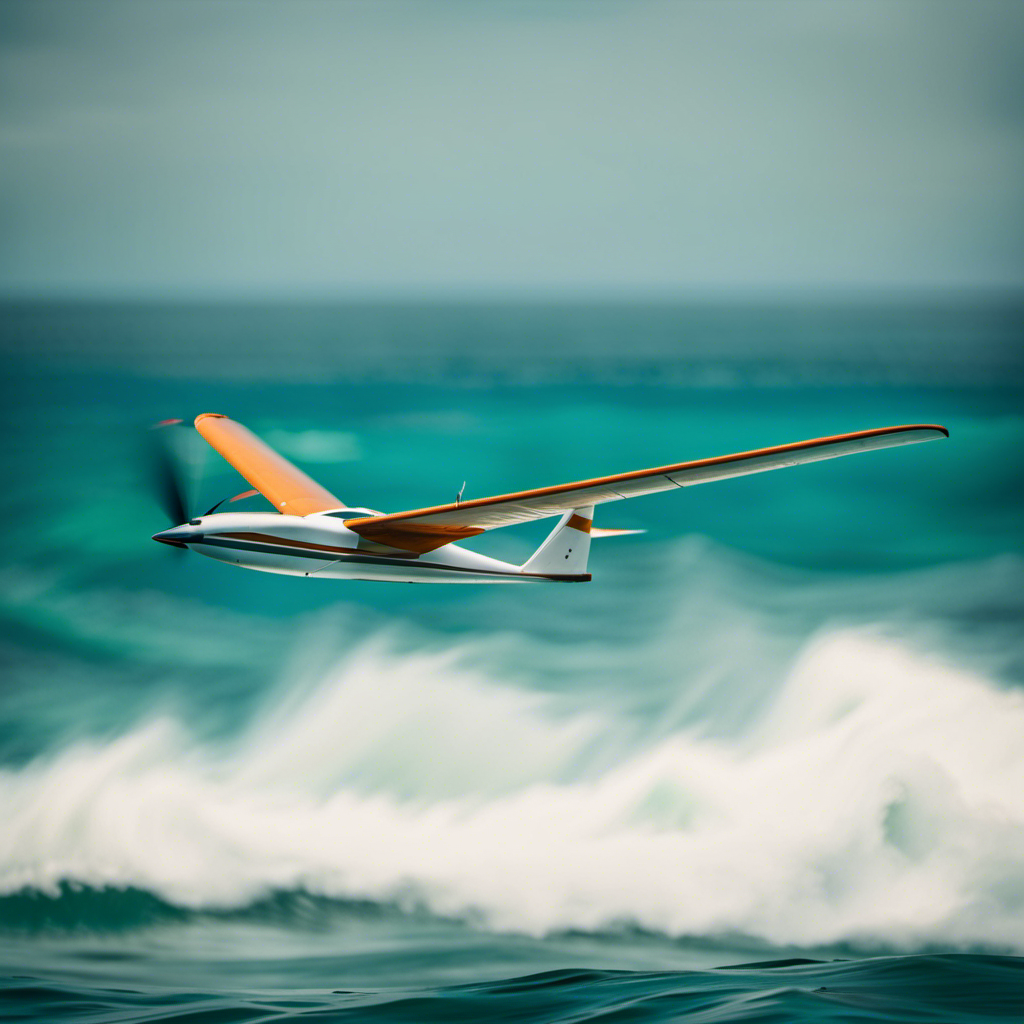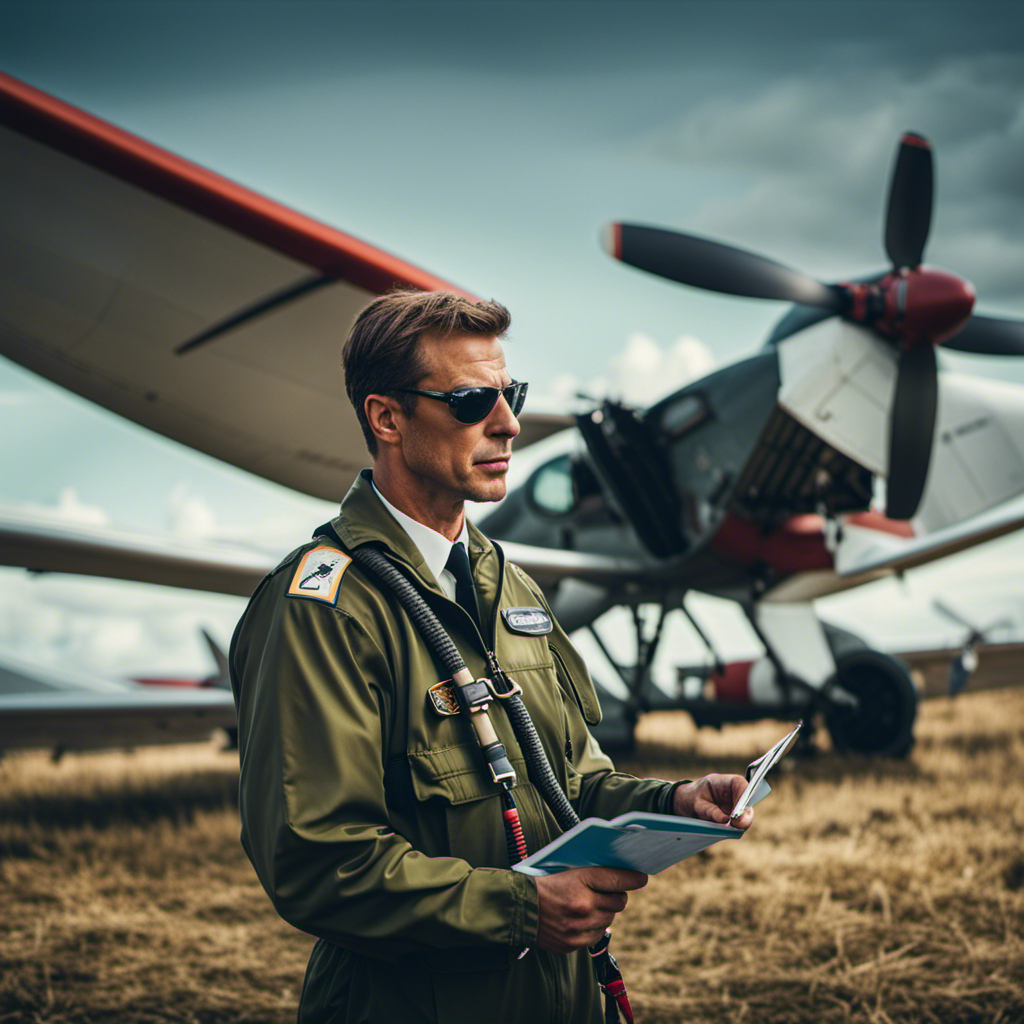Are you interested in becoming a glider pilot and soaring through the skies? Get ready, buckle up, and prepare to take off on your career journey!
In this article, I’ll be your guide as we navigate the ins and outs of obtaining a glider pilot license.
From understanding the basics of glider flying to passing the practical flight test, we’ll cover it all.
So sit tight, because we’re about to chart the course to becoming a licensed glider pilot.
Key Takeaways
- Glider pilot license application and maintenance involves submitting necessary paperwork, completing the application form, providing proof of flight experience and training, and paying required fees.
- Staying informed about aviation regulations, licensing requirements, and changes in medical certification standards, flight hour requirements, or training obligations is crucial for safe and legal operation.
- Taking advantage of ongoing learning opportunities, participating in advanced training programs, attending seminars, and joining professional associations are important for continuous learning and skill improvement.
- Staying informed about regulatory changes, embracing advancements in technology, and staying updated on industry developments are essential for adapting to new challenges and ensuring flight safety.
Understand the Basics of Glider Flying
To understand the basics of glider flying, you need to familiarize yourself with the different controls and maneuvers. As a glider pilot, it is crucial to have a comprehensive understanding of how the controls operate and how to execute various maneuvers in the air. The primary controls are the joystick, which controls the pitch and roll of the glider, and the rudder pedals, which control the yaw. By manipulating these controls, you can navigate the glider through the air and perform graceful turns, climbs, and descents.
Additionally, it is essential to learn about airspeed control, weight and balance considerations, and emergency procedures. Mastering these basics will provide a solid foundation for your journey towards becoming a skilled glider pilot.
Now that you have a grasp of the basics of glider flying, let’s delve into the next crucial aspect: meeting the age and medical requirements.
Meet the Age and Medical Requirements
You must be of a specific age and meet certain medical requirements to obtain a glider pilot license. Here are the key requirements:
-
Age: In most countries, you must be at least 14 or 16 years old to begin training for a glider pilot license. However, the minimum age can vary depending on the country and specific regulations.
-
Medical Fitness: To ensure the safety of yourself and others, you need to meet certain medical standards. This involves passing a medical examination conducted by an aviation medical examiner. The examination assesses your general health, vision, hearing, and cardiovascular fitness.
-
Mental Fitness: Along with physical fitness, mental fitness is crucial for being a glider pilot. You must possess the ability to make sound decisions, handle stressful situations, and maintain situational awareness while flying.
Meeting these age and medical requirements is the first step towards embarking on an exciting journey as a glider pilot.
To further pursue your dream, the next section will guide you on joining a glider flying school, where you can gain the necessary knowledge and skills to become a licensed pilot.
Join a Glider Flying School
Once you’ve met the age and medical requirements, your next step is to join a glider flying school. This is where you will gain the knowledge and skills necessary to become a licensed glider pilot.
At the flying school, you will receive comprehensive training from experienced instructors who will guide you through the entire process. They will teach you the principles of flight, navigation techniques, and emergency procedures.
You will also learn how to operate the glider’s controls and perform various maneuvers. The flying school will provide you with both ground and flight training, ensuring that you are fully prepared to handle the challenges of flying a glider.
Through this training, you will develop the confidence and expertise needed to become a skilled glider pilot.
Complete Ground and Flight Training
During your time at the glider flying school, you’ll receive comprehensive training in both ground and flight techniques. Our program is designed to equip you with the knowledge and skills necessary to become a proficient glider pilot. Here are three key aspects of our training:
-
Ground School: You will learn about aerodynamics, meteorology, navigation, regulations, and safety procedures. This classroom instruction lays the foundation for your understanding of glider flight.
-
Simulator Training: Our state-of-the-art simulators allow you to practice various flight scenarios in a controlled environment. This helps you develop essential flying skills, such as coordinating flight controls and managing emergencies.
-
Flight Training: Under the guidance of our experienced instructors, you will take to the skies in a glider. You will learn how to perform pre-flight inspections, execute takeoffs and landings, maneuver the glider in different flight regimes, and handle emergency situations.
Pass the Written Knowledge Test
To pass the written knowledge test, it’s crucial for aspiring glider pilots to invest time and effort into studying various subjects.
Aerodynamics, meteorology, navigation, regulations, and safety procedures are all key areas that must be thoroughly understood. By delving into the principles of aerodynamics, pilots can grasp the fundamental concepts that govern the behavior of gliders in flight.
Meteorology knowledge enables pilots to interpret weather conditions and make informed decisions regarding flight safety. Navigation skills are essential for planning routes and ensuring accurate positioning while flying.
Familiarizing oneself with regulations and safety procedures guarantees compliance with aviation laws and guidelines. Once the written knowledge test is successfully completed, the next stage is to accumulate the required flight hours, gaining practical experience and honing skills in handling gliders.
Accumulate the Required Flight Hours
You’ll need to log a certain number of flight hours to meet the requirements for your glider pilot license. The accumulation of flight hours is a crucial step in becoming a licensed glider pilot. Here’s what you need to know:
- Spend a minimum of 40 hours in flight, with at least 10 hours as pilot-in-command.
- Ensure that 20 of those hours are dedicated to solo flights, where you are the sole occupant of the glider.
- Fly at least 2 hours of cross-country flights, covering a distance of at least 50 nautical miles.
- Gain experience in different weather conditions, including at least 10 flights in thermals or ridge soaring.
Accumulating these flight hours will not only enhance your skills but also demonstrate your proficiency as a glider pilot.
Once you’ve logged the required flight hours, you’ll be ready to move on to the next step: passing the practical flight test.
Pass the Practical Flight Test
Once you’ve accumulated the required flight hours, passing the practical flight test is the next step towards becoming a licensed glider pilot. This test is designed to assess your skills and knowledge in operating a glider safely and effectively. During the test, you will demonstrate your ability to perform various maneuvers, such as takeoffs, landings, and emergency procedures. The examiner will evaluate your decision-making, situational awareness, and overall airmanship. It is crucial to be well-prepared and confident for the test. To help you understand the importance of this milestone, I have included a table below that highlights the emotions you may experience during the practical flight test.
| Emotion | Description |
|---|---|
| Nervous | Feeling anxious or worried |
| Excited | Feeling enthusiastic or eager |
| Focused | Being concentrated and determined |
| Accomplished | Feeling proud and fulfilled |
After successfully passing the practical flight test, you can then proceed to apply for the glider pilot license.
Apply for the Glider Pilot License
After passing the practical flight test, the next step is applying for the glider pilot license. Once you have demonstrated your skills and knowledge in the air, it is time to make it official.
The application process is straightforward and requires you to submit the necessary paperwork to the appropriate aviation authority. This usually includes completing an application form, providing proof of your flight experience and training, and paying the required fees.
It is important to ensure that all the required documents are accurate and up to date to avoid any delays in the licensing process. Once your application is approved, you will receive your glider pilot license, allowing you to legally operate gliders.
With your license in hand, the next section will focus on how to maintain and renew your license, ensuring you can continue enjoying the thrill of glider flying.
Maintain and Renew Your License
To maintain and renew your license, it’s important to stay up to date with any changes in regulations and requirements. As a glider pilot, ensuring that your license remains valid is crucial for continued safe and legal operation in the skies.
Here are some key points to keep in mind:
- Regularly review and familiarize yourself with the latest aviation regulations pertaining to glider operations.
- Stay informed about any updates or amendments to licensing requirements issued by the relevant aviation authority.
- Check for any changes in medical certification standards, flight hour requirements, or training obligations.
- Stay updated on any mandatory recurrent training or proficiency checks that may be necessary.
By staying proactive and informed about the evolving regulations and requirements, you can ensure that your glider pilot license remains current and valid.
This will enable you to continue learning and improving your skills without interruption.
Continue Learning and Improving Your Skills
Make sure you take advantage of opportunities for ongoing learning and skill development as a glider pilot. As a licensed pilot, it is crucial to continuously improve your skills and stay up-to-date with the latest information in the field.
Participating in advanced training programs, attending seminars, and joining professional associations can all contribute to your growth as a pilot. By expanding your knowledge and honing your skills, you will become a more confident and competent pilot.
Additionally, staying informed about regulatory changes and advancements in technology will help you adapt to new challenges and ensure the safety of your flights. Embrace a mindset of lifelong learning and strive to become the best pilot you can be.
Frequently Asked Questions
What are the physical fitness requirements for obtaining a glider pilot license?
To obtain a glider pilot license, I must meet certain physical fitness requirements. These requirements ensure that I am in good health and capable of safely operating a glider.
Can I start training for a glider pilot license at any age?
Yes, you can start training for a glider pilot license at any age. However, it’s important to note that certain age requirements may vary depending on the country or organization you are training with.
Are there any restrictions on where I can fly a glider once I obtain my license?
There are restrictions on where I can fly a glider once I obtain my license. These restrictions vary depending on the airspace regulations and restrictions set by the local aviation authorities.
Are there any additional endorsements or ratings I can obtain after obtaining a glider pilot license?
Yes, there are additional endorsements and ratings you can obtain after getting your glider pilot license. These advancements allow you to fly in more challenging conditions and expand your skills as a pilot.
Is there a maximum amount of time in which I must complete the required flight hours for a glider pilot license?
There is no maximum amount of time in which you must complete the required flight hours for a glider pilot license. However, it is important to consistently practice and gain experience to ensure proficiency.
Conclusion
In conclusion, obtaining a glider pilot license requires dedication and perseverance. It is a journey that starts with understanding the basics of glider flying and meeting the age and medical requirements.
Joining a glider flying school and completing both ground and flight training is crucial. Passing the written knowledge test and practical flight test are essential milestones.
Once you have applied for and received your glider pilot license, remember to maintain and renew it regularly.
Remember, as they say, the sky’s the limit!
With a heart that soars as high as the skies, Aria, affectionately known as “Skylark,” is the driving force behind Soaring Skyways. Her journey into the gliding world began as a young dreamer gazing up at the soaring birds, yearning to experience the weightlessness and freedom they embodied. With years of experience both in the cockpit and behind the scenes, Aria’s commitment to the gliding community is unwavering.










